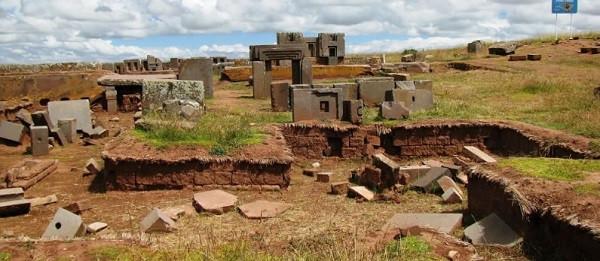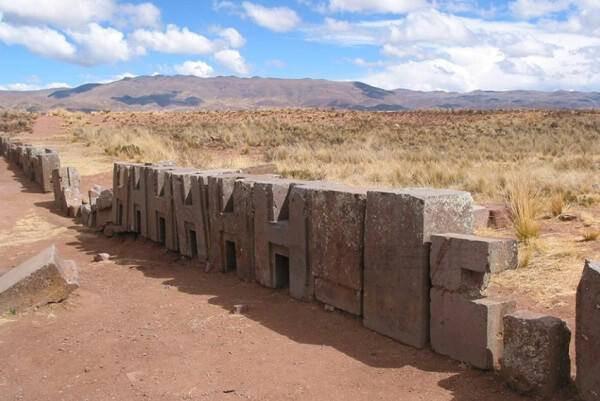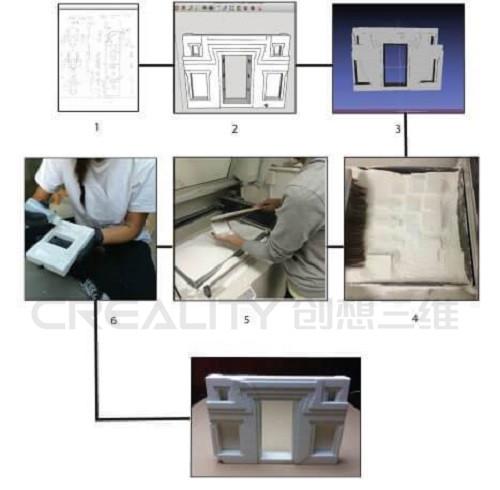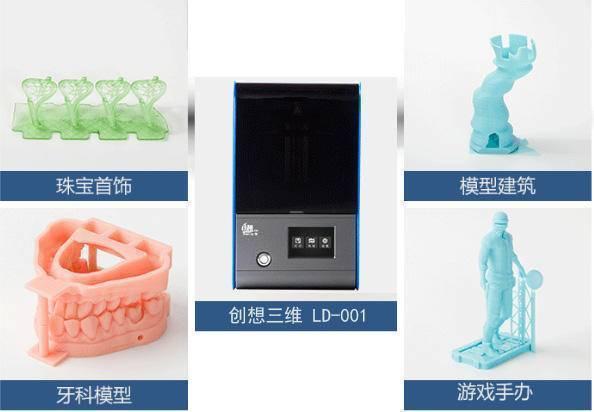3D scanners and 3D printers have been used to help UNESCO World Heritage Site located in Bolivia. Recently developed by the archaeological team of the University of California, Los Angeles, they decided to help rebuild the Tiwanaku ruins (AD 500-950) through 3D printing technology . In the future, 3D printers will be closely linked to archaeological projects!

Let's take a look at this archaeological team, how they successfully rebuilt the temple through a 3D printer, and how much the 3D printer helped rebuild the temple.
I. Reconstruction and protection of cultural heritage - the ruins of Bolivia
Tiwanaku is a pre-Colombian civilization in Bolivia and is known for its monumental architecture. Archaeologist Alexei Flanic decided to use the same LEGO method to reconstruct the Puma Pengu Temple by using 3D printed parts. Due to the long time of the temple and the serious damage, it is impossible to re-assemble all these existing parts without knowing the original appearance of the temple.
The Puma Peng Valley Temple consists of finely cut sandstone plates and andesite blocks. There are 150 scattered blocks, but none of them are in the original position. Since some of the surviving stones were too heavy to move, Vranich decided to make an exact replica of the stones. In this case, 3D printing technology seems to be one of the most convenient manufacturing methods.

In the past few years, people have already made some reconstruction attempts, but they have all failed. However, based on existing measurements and previous research, the team has been able to use 3D printing technology to rebuild it based on past experience. With the application of 3D printing technology, the content of the temple can be well displayed. For archaeologists, scaling the model to 4% of the original site will help them get the details of the reconstruction.
This is not the only time to use 3D printing techniques to rebuild monuments or cultural sites. Previously, the arches destroyed by ISIS had been rebuilt using 3D printing technology. This application of 3D printing can have a huge impact on our cultural heritage, making it easier for archaeologists to protect and repair numerous monuments.
Second, how did they proceed?
Since they have completed research and data collection in the past, they have not completely started from scratch. The data collected over 150 years has greatly helped the team of archaeologists. Fortunately, the data was translated into 3D information and the CAD design of the Puma Pengu Temple was made using Sketchup.
The following is the 3D printing stage of the Puma Peng Valley Temple Gate:

How big is the help of archaeologists in this situation with 3D scanning? We know that due to the diverse architectural styles of the temples, especially the complex geometric details, it is too laborious to rely on traditional restorations. However, 3D scanning can do this easily.
They will use the FDM3D printer and then use powder printing to recreate the Temple of Puma Pengu, where archaeologists must manipulate complex geometries. Finally, they have to assemble all the models themselves. The assembly of 3D printed archaeological models is well visualized, and they can continually try new geometric manipulation methods to help them better.
3. Why does 3D printing technology bring perfect solutions to archaeological projects?
Building a project like this will be easier thanks to the use of 3D programs. It achieves excellent visualization and uses CAD programs for all 3D printing iterations and all 3D modifications or simulations. 3D printing can get accurate objects as well as very complex geometries.

4. Is the 3D printer used for reconstruction or for protection?
In fact, we can use 3D printers to retain data and replicas before rebuilding artifacts and structures. It's really useful for fixing fragile objects. For example, we see museums that can use 3D printing or 3D scanning to reproduce artifacts and precious collections. The prospects for archaeological and reconstruction 3D printing are very broad. In fact, this project proves that it is possible to reconstruct monuments using this cutting-edge technology!

Source: Creative 3D
The weaving thread is the perfect thread for sewing wigs. Wig Accessories sewing thread for hair weft extension. It is breathable, strong and durable.
Best for hair decor, weaving and extensions, Ideal tool set for sewing hair weft, wig hair, hair weave extension, clip hair extension.
Thicker are durable thread which is strong enough to handle the weight of extensions of any length for months, can be used making wigs hair weft and so on.
Any questions about, how to use or products quality just contact with seller first, we will solve your porblems.
Wig Thread,Nylon Sewing Thread,Best Thread For Wig Making,Hair Extension Thread
Xuchang Le Yi De Import And Export Trade Co., Ltd. , https://www.synthetichairs.com